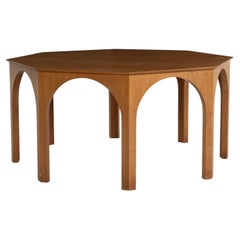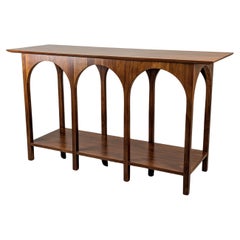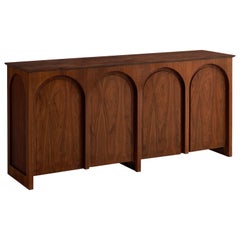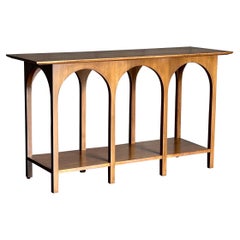Widdicomb Colosseum
Vintage 1950s English Mid-Century Modern Dining Room Tables
Walnut
20th Century Console Tables
Walnut
Vintage 1950s American Mid-Century Modern Cabinets
Walnut
Recent Sales
Vintage 1950s American Mid-Century Modern Console Tables
Walnut
Vintage 1950s American Mid-Century Modern Cabinets
Walnut
Vintage 1950s American Mid-Century Modern Cabinets
Walnut
Vintage 1950s American Mid-Century Modern Cabinets
Walnut
Vintage 1950s American Mid-Century Modern Cabinets
Walnut
Vintage 1950s American Mid-Century Modern Wall Mirrors
Glass, Walnut
Vintage 1950s American Mid-Century Modern Side Tables
Walnut
Vintage 1950s American Mid-Century Modern Dressers
Walnut
Vintage 1950s American Mid-Century Modern Console Tables
Walnut
20th Century Mid-Century Modern Dressers
Wood
Vintage 1950s American Modern Coffee and Cocktail Tables
People Also Browsed
Vintage 1930s French Mid-Century Modern Desks and Writing Tables
Steel
Antique 19th Century English Victorian Shelves
Mahogany
2010s British Coffee and Cocktail Tables
Wrought Iron
2010s Italian Classical Roman Console Tables
Concrete
Early 20th Century French Art Deco Club Chairs
Ash, Upholstery
Vintage 1980s Italian Chandeliers and Pendants
Murano Glass
Mid-20th Century French Art Deco Console Tables
Wood
Vintage 1940s French Club Chairs
Leather
Vintage 1950s Danish Scandinavian Modern Desks and Writing Tables
Teak
21st Century and Contemporary American Mid-Century Modern Credenzas
Acrylic, Burl, Wood
Mid-20th Century Dutch Mid-Century Modern Armchairs
Alpaca, Wood
2010s Italian Modern Stools
Brass
21st Century and Contemporary British Regency Dining Room Tables
Mahogany
Mid-20th Century Italian Mid-Century Modern Floor Lamps
Marble, Metal, Aluminum
Vintage 1940s Italian Mid-Century Modern Lounge Chairs
Mohair
20th Century Swedish Scandinavian Modern Sofas
Leather, Wood
T.H. Robsjohn-Gibbings for sale on 1stDibs
British-born designer, interior decorator and author T.H. Robsjohn-Gibbings was one of the great American tastemakers in the middle decades of the 20th century. Much like Edward Wormley, Robsjohn-Gibbings was a design classicist by education and inclination, but he would come to create some of the most gracious and livable modern furnishings of the era.
Robsjohn-Gibbings studied architecture at the University of London, then held various jobs that included designing décors for passenger liners and working as the art director of a film studio. In the early 1930s, while employed by the upper-crust interior designer Charles J. Duveen, Robsjohn-Gibbings experienced an epiphany during a visit to the British Museum.
Examining the furniture depicted on ancient Greek ceramics — lithe stools and klismos chairs — he realized that he had found a design touchstone. By 1936, Robsjohn-Gibbings had moved to New York and set up a showroom on Madison Avenue for his modern reinterpretations of Classical Greek designs. Aided by contacts he’d developed while working with Duveen, he quickly established a clientele that included Elizabeth Arden, Doris Duke and Thelma Chrysler Foy.
Through his writings for magazines and books, Robsjohn-Gibbings earned a public following and was established as an urbane arbiter of taste. From 1943 to 1956, he produced an understated line of modernist furnishings for Widdicomb, which included one of the icons of the period: the tiered, biomorphic Mesa coffee table (1951). Robsjohn-Gibbings moved to Athens, Greece, in 1966, and created a new line of antiquity-inspired pieces for the firm Saridis. The series turned out to be his swan song.
Collectors’ interest in Robsjohn-Gibbings was reignited in the 1980s when the 200-plus pieces from his 1936–38 commission for the Bel-Air estate of Los Angeles socialite Hilda Boldt Weber — pared-down neoclassical pieces rendered in blond wood (with the occasional flourish) — came on the market. (Up until then, the collection had remained in the house, despite its having changed hands several times.)
But his work for Widdicomb remains his most widely known, appreciated for its elegance and generous proportions. Robsjohn-Gibbings despised the stern aesthetic associated with his Bauhaus contemporaries, and a keynote of his modernist pieces is that they have no sharp angles. His chair and sofa frames, table legs and even many cabinets feature softly contoured edges. In whatever style he designed, Robsjohn-Gibbings was guided by simplicity and timelessness. He wanted his furniture to be lived with happily.
Find antique T.H. Robsjohn-Gibbings coffee tables, dining tables, credenzas and other furniture on 1stDibs.
A Close Look at Mid-century Modern Furniture
Organically shaped, clean-lined and elegantly simple are three terms that well describe vintage mid-century modern furniture. The style, which emerged primarily in the years following World War II, is characterized by pieces that were conceived and made in an energetic, optimistic spirit by creators who believed that good design was an essential part of good living.
ORIGINS OF MID-CENTURY MODERN FURNITURE DESIGN
- Emerged during the mid-20th century
- Informed by European modernism, Bauhaus, International style, Scandinavian modernism and Frank Lloyd Wright’s architecture
- A heyday of innovation in postwar America
- Experimentation with new ideas, new materials and new forms flourished in Scandinavia, Italy, the former Czechoslovakia and elsewhere in Europe
CHARACTERISTICS OF MID-CENTURY MODERN FURNITURE DESIGN
- Simplicity, organic forms, clean lines
- A blend of neutral and bold Pop art colors
- Use of natural and man-made materials — alluring woods such as teak, rosewood and oak; steel, fiberglass and molded plywood
- Light-filled spaces with colorful upholstery
- Glass walls and an emphasis on the outdoors
- Promotion of functionality
MID-CENTURY MODERN FURNITURE DESIGNERS TO KNOW
- Charles and Ray Eames
- Eero Saarinen
- Milo Baughman
- Florence Knoll
- Harry Bertoia
- Isamu Noguchi
- George Nelson
- Danish modernists Hans Wegner and Arne Jacobsen, whose emphasis on natural materials and craftsmanship influenced American designers and vice versa
ICONIC MID-CENTURY MODERN FURNITURE DESIGNS
- Eames lounge chair
- Nelson daybed
- Florence Knoll sofa
- Egg chair
- Womb chair
- Noguchi coffee table
- Barcelona chair
VINTAGE MID-CENTURY MODERN FURNITURE ON 1STDIBS
The mid-century modern era saw leagues of postwar American architects and designers animated by new ideas and new technology. The lean, functionalist International-style architecture of Le Corbusier and Bauhaus eminences Ludwig Mies van der Rohe and Walter Gropius had been promoted in the United States during the 1930s by Philip Johnson and others. New building techniques, such as “post-and-beam” construction, allowed the International-style schemes to be realized on a small scale in open-plan houses with long walls of glass.
Materials developed for wartime use became available for domestic goods and were incorporated into mid-century modern furniture designs. Charles and Ray Eames and Eero Saarinen, who had experimented extensively with molded plywood, eagerly embraced fiberglass for pieces such as the La Chaise and the Womb chair, respectively.
Architect, writer and designer George Nelson created with his team shades for the Bubble lamp using a new translucent polymer skin and, as design director at Herman Miller, recruited the Eameses, Alexander Girard and others for projects at the legendary Michigan furniture manufacturer.
Harry Bertoia and Isamu Noguchi devised chairs and tables built of wire mesh and wire struts. Materials were repurposed too: The Danish-born designer Jens Risom created a line of chairs using surplus parachute straps for webbed seats and backrests.
The Risom lounge chair was among the first pieces of furniture commissioned and produced by celebrated manufacturer Knoll, a chief influencer in the rise of modern design in the United States, thanks to the work of Florence Knoll, the pioneering architect and designer who made the firm a leader in its field. The seating that Knoll created for office spaces — as well as pieces designed by Florence initially for commercial clients — soon became desirable for the home.
As the demand for casual, uncluttered furnishings grew, more mid-century furniture designers caught the spirit.
Classically oriented creators such as Edward Wormley, house designer for Dunbar Inc., offered such pieces as the sinuous Listen to Me chaise; the British expatriate T.H. Robsjohn-Gibbings switched gears, creating items such as the tiered, biomorphic Mesa table. There were Young Turks such as Paul McCobb, who designed holistic groups of sleek, blond wood furniture, and Milo Baughman, who espoused a West Coast aesthetic in minimalist teak dining tables and lushly upholstered chairs and sofas with angular steel frames.
Generations turn over, and mid-century modern remains arguably the most popular style going. As the collection of vintage mid-century modern chairs, dressers, coffee tables and other furniture for the living room, dining room, bedroom and elsewhere on 1stDibs demonstrates, this period saw one of the most delightful and dramatic flowerings of creativity in design history.




